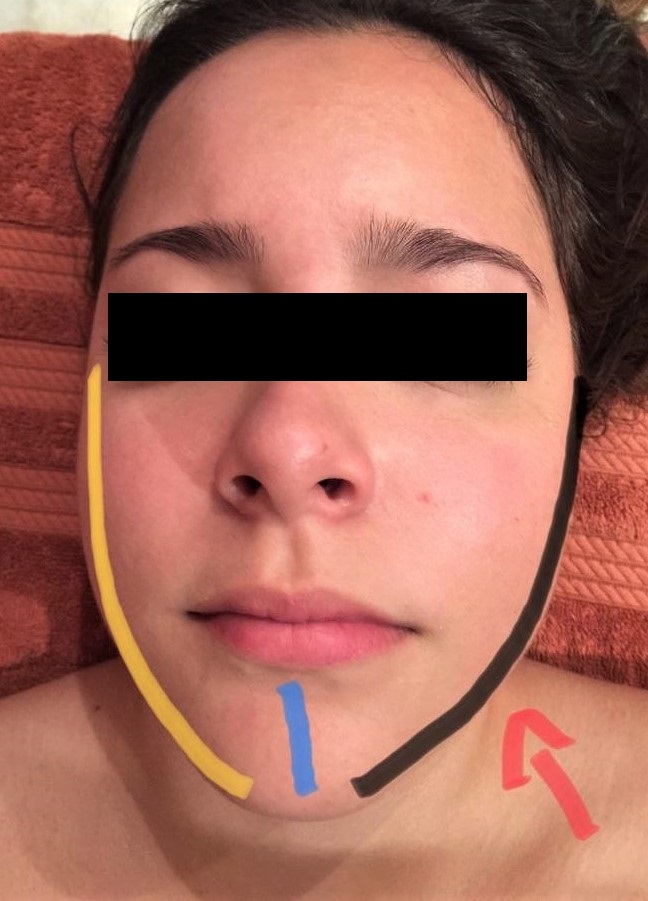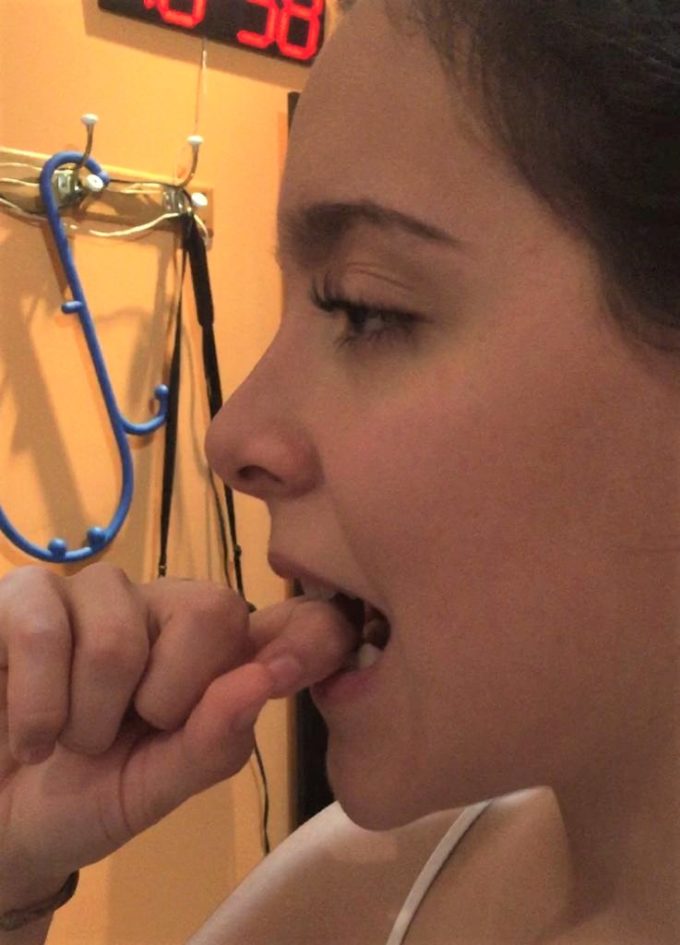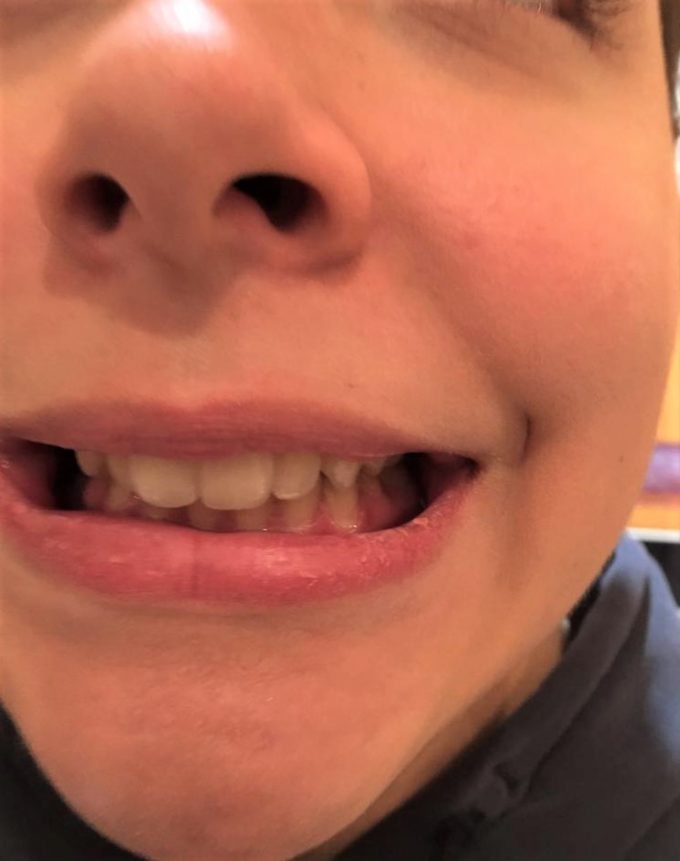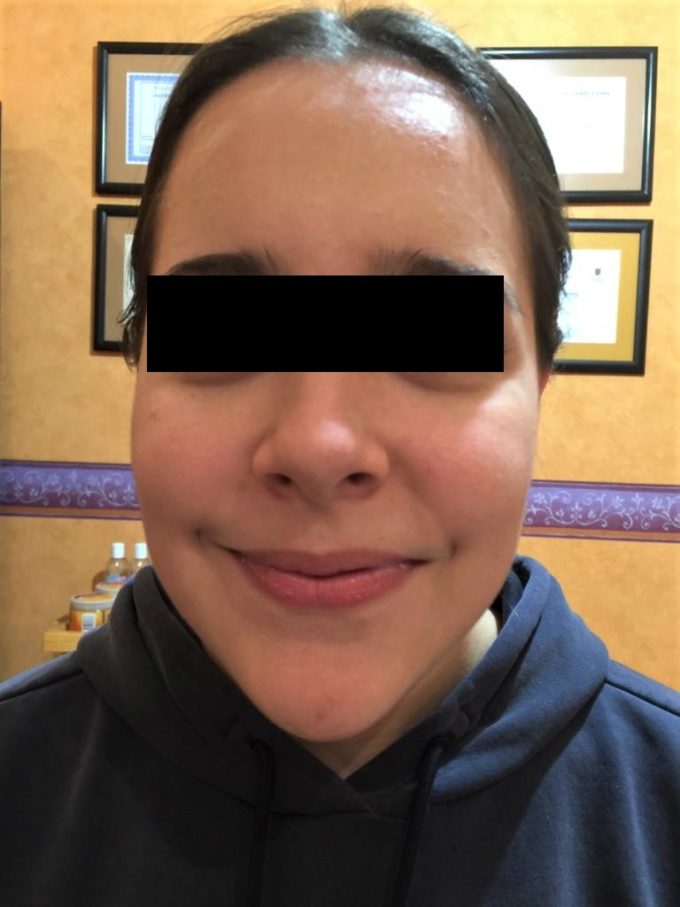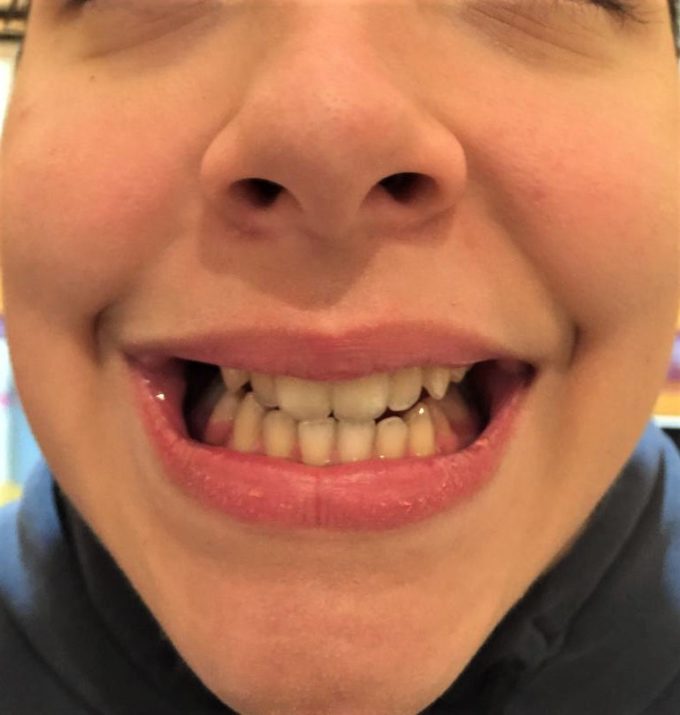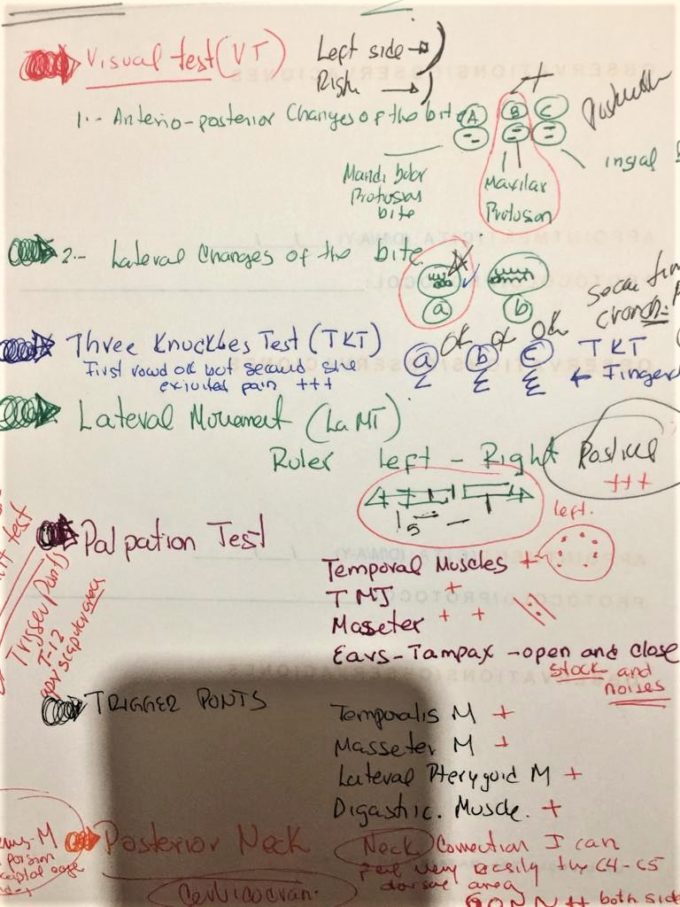Juan Luis Ordaz Sabag, DMV, MMP, CMMP
Torreon, Mexico
After we decisively helped several patients with TMJ dysfunction, the very prestigious Barocio Group of Dentists and Oral Surgeons in Torreon started to regularly refer patients to our clinic. This recent patient had a very expressive clinical picture of TMJ Dysfunction.
One and half years ago a young woman (17 years old) got in a car accident and after that she developed left temporal pain which got progressively worse and spread through her left side of the face. She was treated by physicians with pain medications, dentists and physical therapists, but the clinical symptoms continued to get worse. Finally, the patient was seen by Dr. Vincente Barocio who referred her to our clinic.
EVALUATION
Complaints
Severe pain in the left temporal area and left side of the face which became acute with even the slightest opening of the mouth. She developed severe regular migraines. The patient ate mostly homogenized food. Due to the pain intensity the patient became emotionless and avoided long conversations.
Visual Evaluation
Even visual observation indicated that her left side of the face was more swollen (dark line in Fig. 1) and slight lips asymmetry visible since lower jaw is shifted to the left (pay attention to the shift of the left of the vertical blue line which indicates middle of the lower jaw).
Fig. 1. Face asymmetry
The patient can’t open her mouth without pain. The Three Knuckles Test revealed that she could barely fit one knuckle between her upper and lower teeth (see Fig. 2). Normal ROM means that a person should easily fit three knuckles of 2d-4th fingers compressed together.
Fig. 2. Three Knuckles Test during the evaluation
The visual examination of her bite indicated that she had a significant overbite as it is shown in Fig. 3.
Fig. 3. Overbite of the upper teeth registered during the evaluation
Palpatory Evaluation
Severe tension with active trigger points is detected in temporalis, masseter, lateral pterygoid and digastric muscles bi-laterally but symptoms are more prominent on the left. Tension in the scalp in the temporal area. Tension also registered in the anterior scalene muscle in the anterior neck and in trapezius and suboccipitals in the posterior neck.
TREATMENT
My treatment plan using Science Of Massage Institute’s Video Library:
Session 1: address posterior neck with Cervicalgia MEDICAL MASSAGE PROTOCOL combined with Chronic Headache Protocol
Session 2: I added protocol for the Anterior Scalene Muscle
Session 3: Full TMJ engagement with MEDICAL MASSAGE PROTOCOL
Session 4: Same as previous session adding intra-oral treatment of TMJ on both sides
Session 5: Added components of MEDICAL MASSAGE PROTOCOL to address facial and trigeminal nerves
Break
Sessions 6-8: Combined Neck and TMJ protocols
Session 9: TMJ protocol
Session 10: Final evaluation and back and TMJ protocols
RESULTS
1. No face pain and no migraine. According to her parents the patient psychologically came back to being a cheerful young person (see Fig. 4).
2. The patient’s face equalized on both sides (See Fig. 4)
Fig. 4. The patient’s face before and after the Medical Massage
3. No overbite since position of lower jaw was restored by MEDICAL MASSAGE PROTOCOL. Fig. 5 illustrates the patient’s bite before and after the course of Medical Massage
Fig. 5. The patient’s bite before and after the course of Medical Massage
4. Full opening of the mouth without any pain or restrictions. Fig. 6 illustrates Three Knuckles Test during initial evaluation
Fig. 6. Initial results of the Three Knuckles Test
Video below illustrates the Three Knuckles Test performed by our patient at the end of the treatment. Notice that she can now fit four knuckles between her upper and lower teeth.
The patient was recommended daily exercises during the treatment (to the best of her ability) to prevent spasm and imbalance from happening again (see Video 2 and 3) as well as passive stretching to open mouth and laterally shifting lower jaw.
LESSONS:
1. Juan Luis was presented with a very advanced case of TMJ Dysfunction and his first step was detailed evaluation of the patient. Fig. 7 illustrates one page from the evaluation Juan Luis conducted to develop the correct treatment strategy. At SOMI we dedicate a lot of time to teaching students how to correctly read the clues the body presents to the therapist.
Fig. 7. One of the Juan Luis’ evaluation pages
2. Notice that Juan Luis didn’t even touch the area of TMJ for a couple of sessions. In cases of acute clinical picture it is a mistake to target the affected area first. In these situations, the brain will trigger more expressive protective reactions and it will slow down the ability of the therapist to build an effective clinical response. Controlling the migraine was the first priority and Juan Luis correctly identified that. While reading Juan Luis’s treatment plan it was obvious that he gradually built up a clinical response letting the patient’s CNS to fully cooperate.
3. Juan Luis correctly targeted two cranial nerves to speed up the patient’s recovery. In this case he engaged local and reflex mechanisms of Medical Massage at the same time and they re-enforced each other.
4. The clinical response can be built only with supportive treatment at home by the patient. Giving the patient homework is an integral part of successful rehabilitation and Juan Luis developed a program for the rehabilitation of the patient and it worked.
Category: Blog

